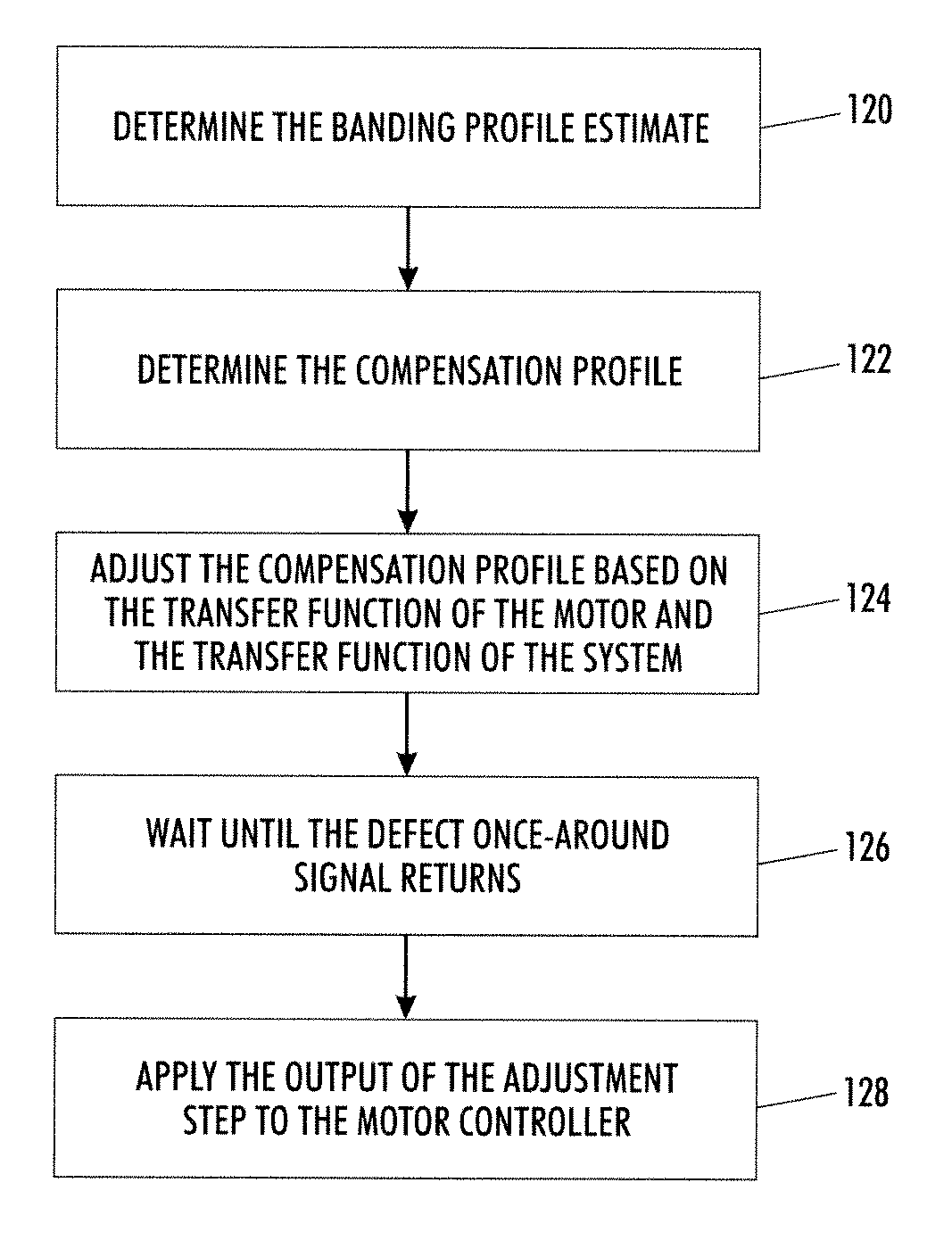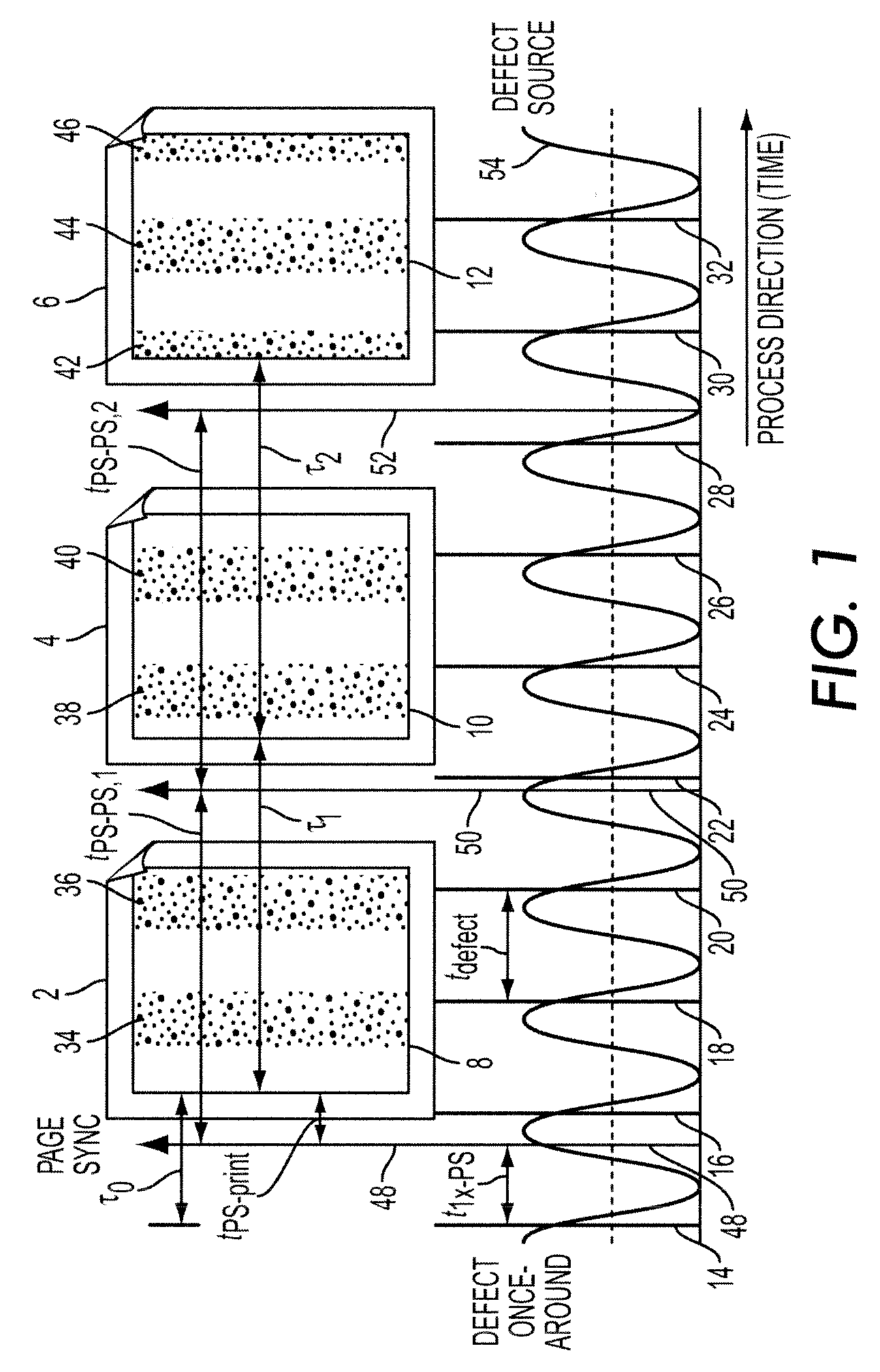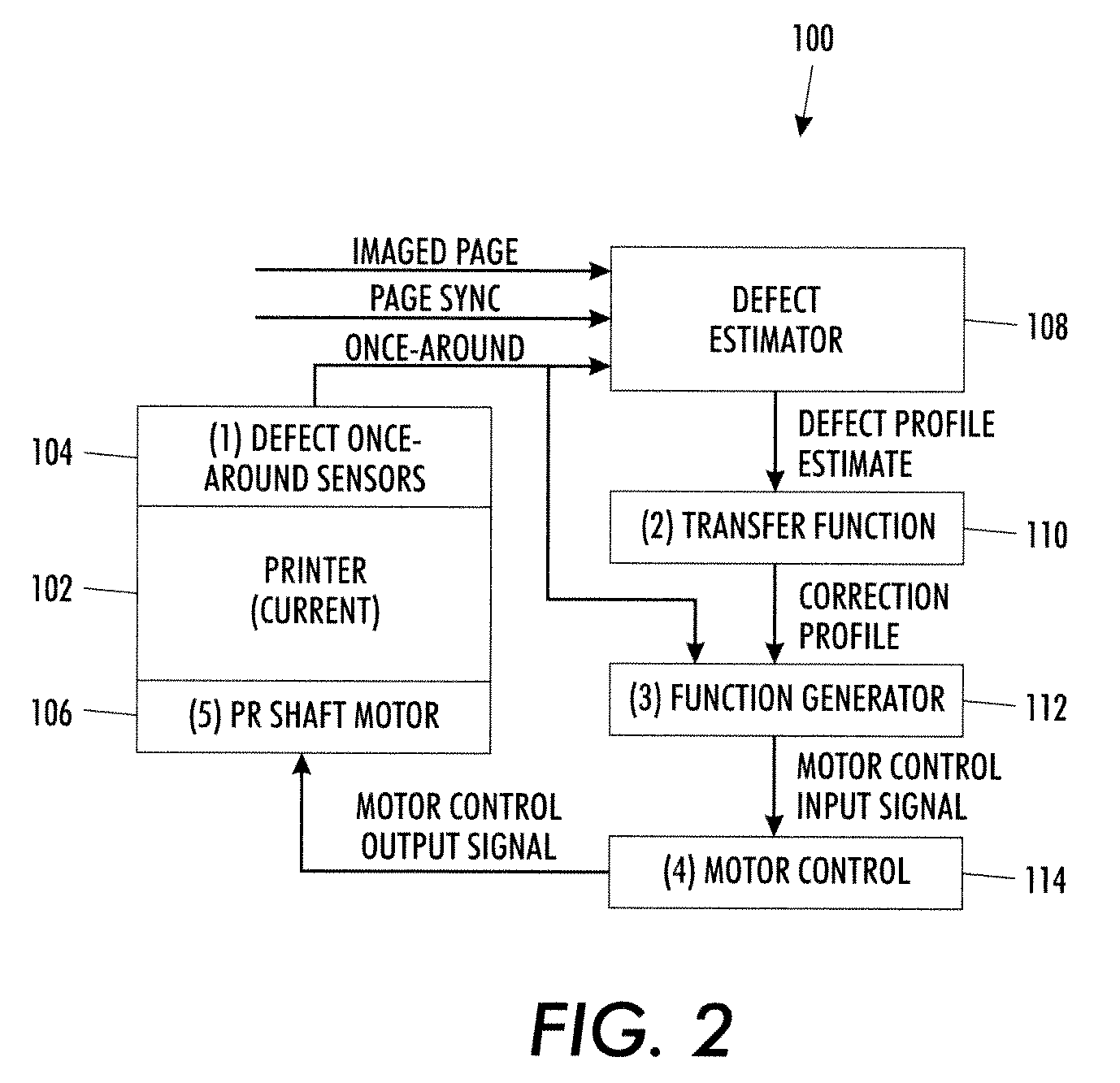Method and system to compensate for banding defects
a banding defect and banding technology, applied in the field of document processing systems, can solve problems such as errors in the mechanical motion of rotating components, significant contributors of artifacts, and line spacing variations,
- Summary
- Abstract
- Description
- Claims
- Application Information
AI Technical Summary
Benefits of technology
Problems solved by technology
Method used
Image
Examples
Embodiment Construction
[0029]Referring now to the drawings wherein the showings are for purposes of illustrating the exemplary embodiments only and not for purposes of limiting the claimed subject matter, a series of images processed by a printing system in a process direction (i.e., the direction of the paper travel in the printing system) is shown in FIG. 1. Consider a print job of M pages, the first three of which are shown in FIG. 1. The boxes with the folded upper right hand corners depict pieces of paper 2, 4, and 6 with printed images or test targets 8, 10, and 12, respectively. They could represent any known sampling interval, such as interdocument zones, customer image zones, or printed pages. The images 8, 10, and 12 on the pieces of paper 2, 4, and 6 represent test targets designed for defect estimation. In the absence of banding defects, the printed test image should be a uniform midtone (i.e., approximately 50% area coverage). Because of banding from mechanical components within the printer, ...
PUM
 Login to View More
Login to View More Abstract
Description
Claims
Application Information
 Login to View More
Login to View More - R&D
- Intellectual Property
- Life Sciences
- Materials
- Tech Scout
- Unparalleled Data Quality
- Higher Quality Content
- 60% Fewer Hallucinations
Browse by: Latest US Patents, China's latest patents, Technical Efficacy Thesaurus, Application Domain, Technology Topic, Popular Technical Reports.
© 2025 PatSnap. All rights reserved.Legal|Privacy policy|Modern Slavery Act Transparency Statement|Sitemap|About US| Contact US: help@patsnap.com



